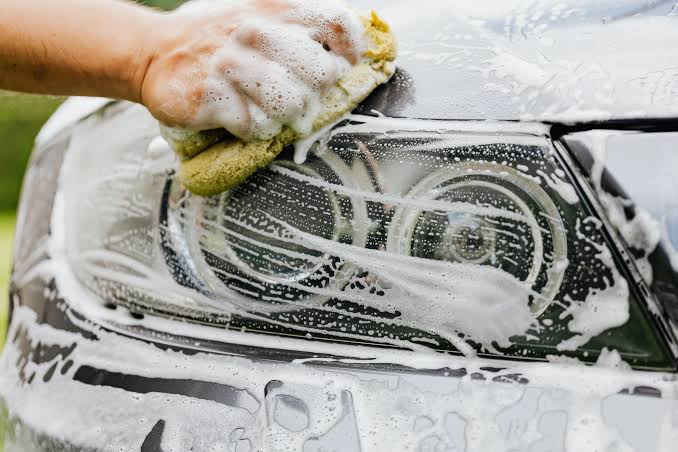🚗 Introduction: Clean Car, Smart Choice
A clean car isn’t just about looks—it’s about care, pride, and performance. While automatic washes are fast and full-service detailing is luxurious, there’s a perfect middle ground: the self serve car wash.
Self serve car washes offer flexibility, affordability, and control. You get professional tools without the professional price tag. Whether you’re a car enthusiast or just want a quick clean on a budget, this guide will help you master the self-serve wash.
🧼 What is a Self Serve Car Wash?
A self serve car wash is a public wash station where you clean your vehicle yourself using high-pressure hoses, foam brushes, vacuums, and cleaning bays. You insert coins, bills, or a card to activate water and soap options.
Unlike automatic washes, you’re in charge. You decide what parts need more scrubbing, where to rinse twice, and how long to take.
💰 Why Choose a Self Serve Car Wash?
1. Cost-Effective
You can wash your car for as little as $5–$10. That’s a fraction of what you’d pay for full-service detailing or fancy drive-thrus.
2. Control & Precision
Focus on dirty spots. Avoid scratches. Choose gentle soap or strong water pressure where needed.
3. Eco-Friendly
Self serve washes recycle water and use less runoff than home washing. They’re often more sustainable than washing at home in your driveway.
4. Fun & DIY Satisfaction
There’s something oddly satisfying about spraying foam, rinsing grime, and seeing your car shine under your own hands.
🛠️ How Does a Self Serve Car Wash Work?
Most stations follow a multi-step dial system:
🔄 Common Settings You’ll See:
- Pre-Soak – Loosens dirt and grime.
- Soap or Foam Brush – Lathers the surface.
- High-Pressure Rinse – Blasts away debris and soap.
- Wax – Optional clear-coat protection.
- Spot-Free Rinse – Final rinse to prevent water spots.
Simply turn the dial to the function you want, and begin. Most systems work on a timer—you get 3–5 minutes per payment round.
🧽 Step-by-Step: How to Use a Self Serve Car Wash Like a Pro
Step 1: Prep & Park
- Choose a clean, empty bay.
- Close all windows, remove antenna (if needed).
- Bring your microfiber towels or drying cloths.
Step 2: Pre-Rinse
- Use the “Pre-Soak” or “Rinse” setting to wet your car.
- Start from the roof, work down to the tires.
Step 3: Apply Soap
- Switch to “Foam Brush” or “Soap”.
- Lather the car in sections—hood, sides, back.
- Use the foam brush gently to avoid scratching.
- Let the soap sit for a minute to lift dirt.
Step 4: High-Pressure Rinse
- Switch to “High Pressure Rinse”.
- Rinse from top to bottom.
- Don’t forget wheel wells, grilles, and undercarriage.
Step 5: Wax (Optional)
- Use the “Wax” setting for added shine and water resistance.
- Spray a light, even coat—don’t overdo it.
Step 6: Spot-Free Rinse
- Final rinse with purified water.
- Helps avoid drying spots or streaks.
Step 7: Dry by Hand
- Use microfiber towels or a drying chamois.
- Pat dry, don’t rub, to avoid scratches.
💡 Tips for a Better Wash
- Bring change or tokens. Some machines don’t accept cards.
- Avoid peak hours (weekends, evenings).
- Don’t let soap dry on your car—work quickly in hot weather.
- Wear waterproof shoes or sandals.
- Bring detailing spray or tire shine if you want that extra gloss.
🛑 What to Avoid in a Self Serve Car Wash
- Never use the foam brush before rinsing it off—it might have debris from the last car.
- Avoid washing in direct sunlight—soap dries fast, leaving streaks.
- Don’t spray water into the engine bay.
- Don’t hog the bay—others may be waiting.
🌍 Are Self Serve Car Washes Eco-Friendly?
Yes—most modern self serve car washes are built with:
- Water recycling systems
- Runoff containment
- Low-flow nozzles
- Eco-safe soaps
This makes them more environmentally responsible than washing your car at home with a hose.
🧽 Self Serve vs. Automatic vs. Hand Wash: Pros & Cons
| Wash Type | Cost | Time | Quality | Control | Eco Impact |
|---|---|---|---|---|---|
| Self Serve | Low ($) | Med | High | High | Medium |
| Automatic | Med ($$) | Fast | Low | None | Medium |
| Hand Wash | High ($$) | Slow | Very High | Full | Low |
🔧 Tools to Bring with You
While the station provides the basics, bring these for best results:
- Microfiber towels
- Tire cleaner
- Glass cleaner
- Wheel brush
- Drying blade or chamois
- Air freshener (for the interior)
🏪 Finding a Self Serve Car Wash Near You
Most cities have dozens of options. Look for:
- Clean bays
- Working brushes
- Contactless payment
- Well-lit areas (for safety at night)
Many self serve car washes are open 24/7, making it easy to wash on your own time.
📈 Self Serve Car Wash: Business Trend on the Rise
More entrepreneurs are opening self serve car wash businesses because:
- Low staffing needs
- Steady demand
- High return on investment
- Eco-friendly reputation
With mobile payments, loyalty apps, and smart tracking systems, self serve car washes are evolving fast.
🧾 Conclusion
Self serve car washes are the perfect blend of DIY satisfaction and professional-level results. You don’t need to spend big to keep your car sparkling clean. Just a few dollars, a few minutes, and a bit of effort can go a long way.
You’ll save money, reduce environmental impact, and gain a deeper appreciation for your vehicle’s upkeep.
🌟 Final Thoughts
Whether you’re cleaning off road salt in winter or prepping your ride for summer road trips, a self serve car wash offers unmatched convenience. Once you get the hang of it, you’ll never go back to overpriced automatic washes again.
So grab your quarters, roll up your sleeves, and start washing like a pro!
❓ FAQs About Self Serve Car Wash
Q1: How much does a self serve car wash cost?
Usually between $5–$10 depending on location and time used.
Q2: Is self serve better than automatic wash?
Yes, especially for avoiding scratches and targeting tough spots.
Q3: Can I bring my own soap or sponge?
Yes, but use the provided tools to avoid damaging their system.
Q4: Are self serve car washes open at night?
Many are 24/7, but check local hours and lighting.
Q5: Can I vacuum my car too?
Yes—most locations offer coin-operated vacuums.
Q6: Are they safe to use in winter?
Yes—but dry your locks and seals to prevent freezing.




